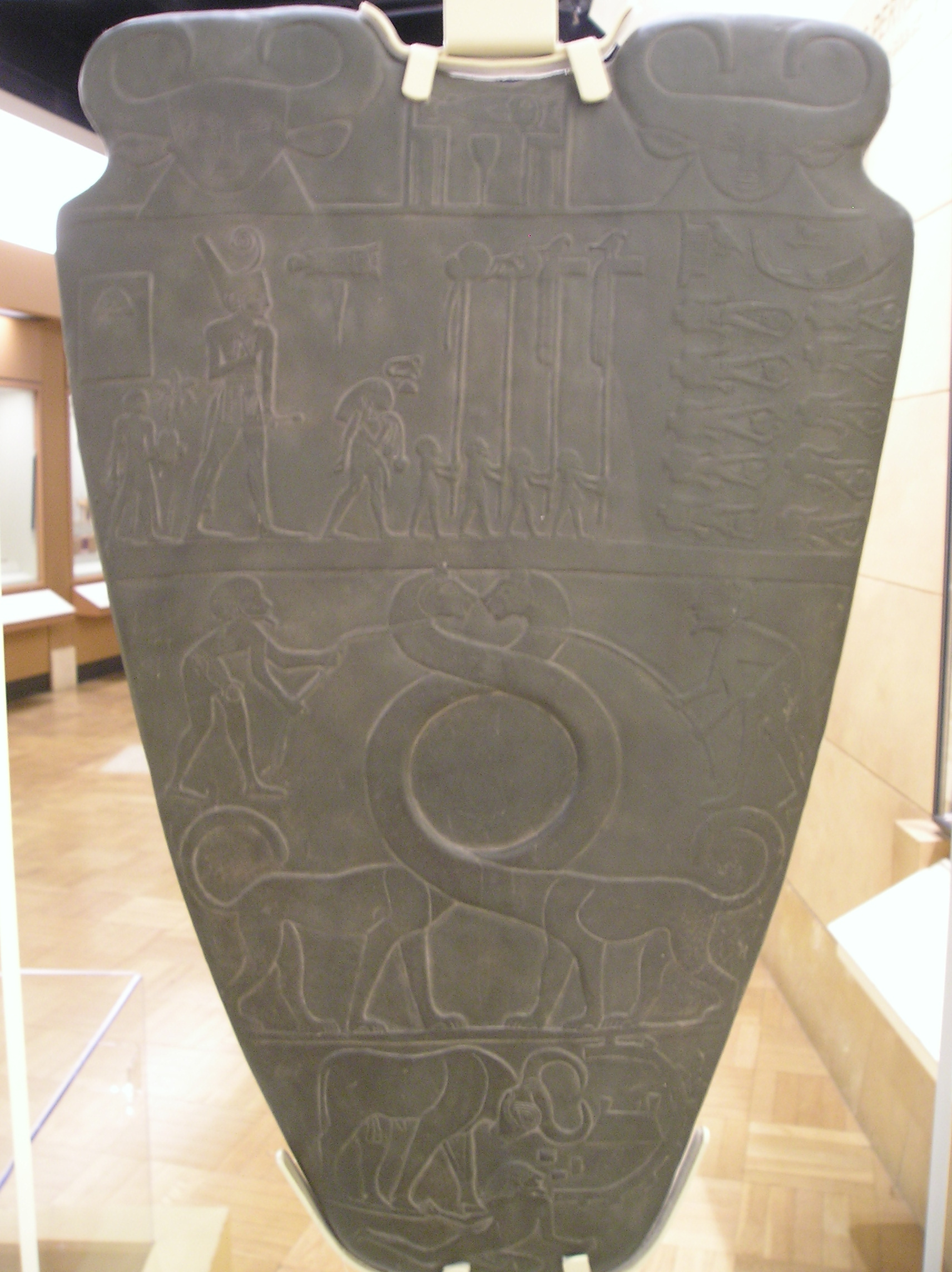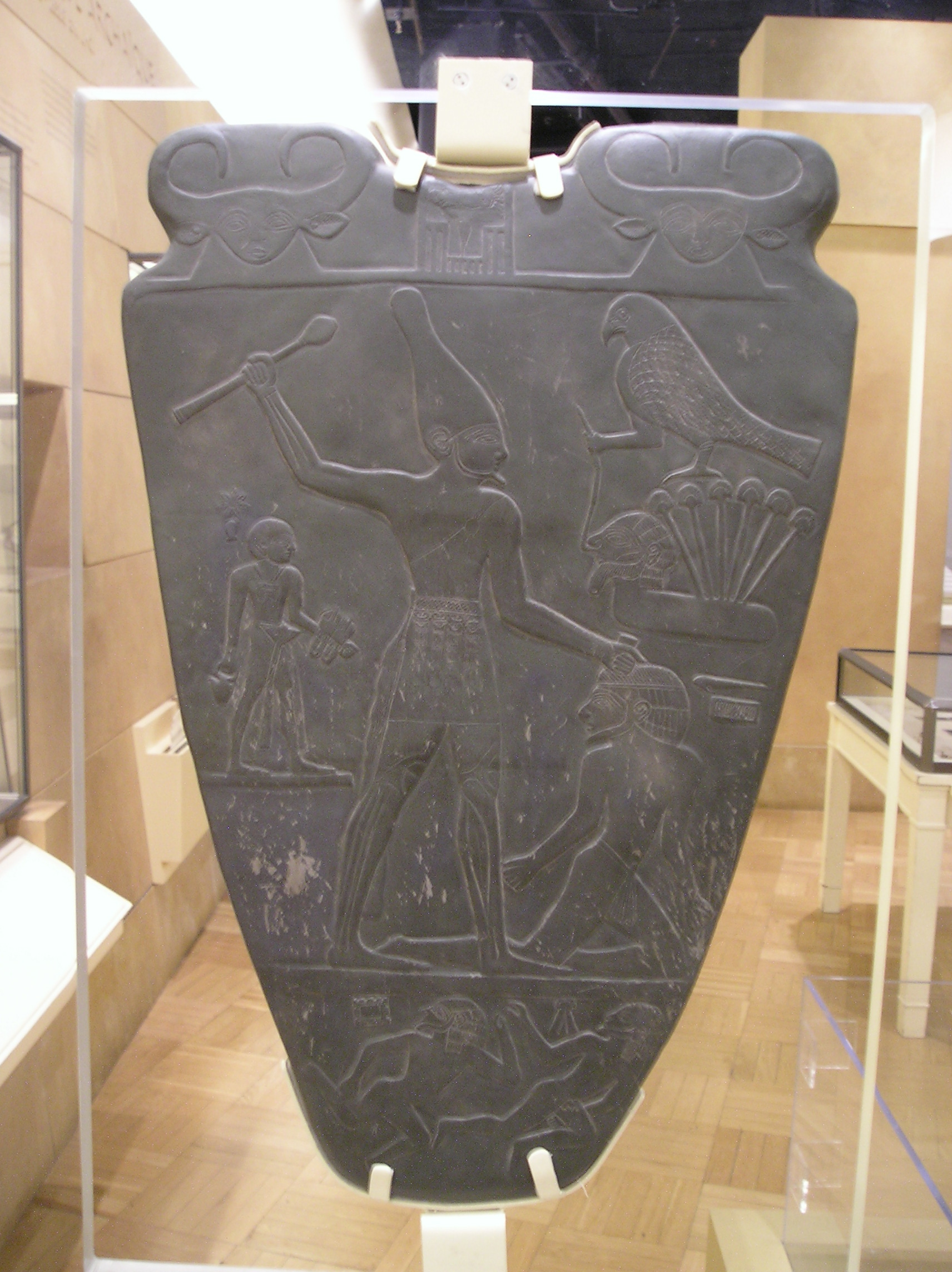Palette of Narmer
 Obverse side
Obverse side Reverse side
Reverse sideFirst Egyptian Dynasty, c. 3000 BCE. Temple of Horus, Hierakonpolis, Egypt. Mudstone.
This piece discovered in the Egyptian Temple of Horus gives significant depictions of both political culture and divinity during the rule of 1st Dynasty king Narmer. Though it is believed that palettes at the time were used to grind cosmetics, the size and weight of these palettes suggest that they were used in ceremonies, perhaps as offerings to the god Horus or used to grind cosmetics for statues within the temple. Whichever the case, the scenes depicted are a visual narrative of the unification of the upper and lower regions of Egypt under Narmer, a successful, strong leader, and are thus referred to by Egyptologist Bob Brier as "the first historical document in the world" ("Narmer").
As is shown in this piece, the Egyptians used many symbols of divinity in their art. On the obverse panel, illustrated perhaps more clearly in the diagram below (on the left), Narmer wears the red crown of Lower Egypt. Narmer is depicted as barefoot, perhaps signaling that his victory was ordained by the gods.
The reverse side of the palette shows Narmer wearing the white crown of Upper Egypt, accompanied by a falcon, the symbol for the god Horus. Narmer is also more than twice the size of the other characters in the scene, suggesting the the king himself is divine, superhuman.
The animals depicted in both sides of this ancient piece symbolize strength, victory, and divinity; a trend that would continue for centuries to come.
As is shown in this piece, the Egyptians used many symbols of divinity in their art. On the obverse panel, illustrated perhaps more clearly in the diagram below (on the left), Narmer wears the red crown of Lower Egypt. Narmer is depicted as barefoot, perhaps signaling that his victory was ordained by the gods.
The reverse side of the palette shows Narmer wearing the white crown of Upper Egypt, accompanied by a falcon, the symbol for the god Horus. Narmer is also more than twice the size of the other characters in the scene, suggesting the the king himself is divine, superhuman.
The animals depicted in both sides of this ancient piece symbolize strength, victory, and divinity; a trend that would continue for centuries to come.
Pictures:
"Narmer Palette". Wikipedia, the Free Encyclopedia 2006. Available online at www.wikipedia.org.
Diagram:
"Palette of Narmer". Available online at www.proel.org/alfabetos/narmer.jpg.
Sources:
"Narmer Palette". Wikipedia, the Free Encyclopedia 2006. Available online at www.wikipedia.org.
Stokstad, Marilyn. "Art of Ancient Egypt". Art History. Revised Second Edition, Vol. 1 p. 57-58.
"Narmer Palette". Wikipedia, the Free Encyclopedia 2006. Available online at www.wikipedia.org.
Diagram:
"Palette of Narmer". Available online at www.proel.org/alfabetos/narmer.jpg.
Sources:
"Narmer Palette". Wikipedia, the Free Encyclopedia 2006. Available online at www.wikipedia.org.
Stokstad, Marilyn. "Art of Ancient Egypt". Art History. Revised Second Edition, Vol. 1 p. 57-58.


0 Comments:
Post a Comment
<< Home